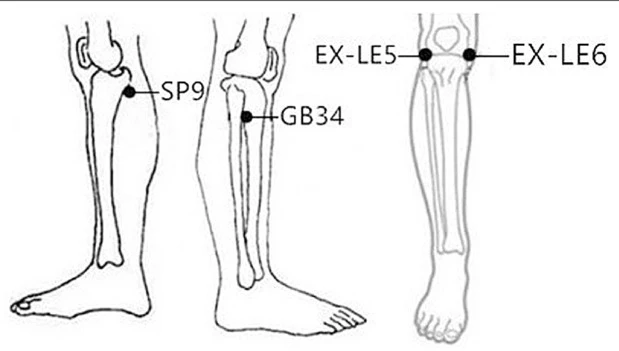This post may contain affiliate links and ads in which we may earn a small percentage of purchases.
Quick Links
You asked for it, and you got it! Here are 12 acupressure points for knee pain with pictures in the surrounding areas that clinicians can use as an reference. Patients can be taught how to utilize these points based on their specific condition and overall provides excellent support to self care.

If you’ve ever quit because meal plans felt overwhelming, this approach keeps it simple. The 21-Day Smoothie Diet gives you daily guidance, a detox reset, and easy recipes—so you can focus on consistency instead of planning. Instant digital access. Start today.
Ease back and neck tension with this full acupressure mat and pillow set designed for relaxation and circulation support.
 View Product
View Product
Combined with my clinical experience, I hope after reading this you will have a increased understanding of a few things. One, that there are acupressure points that can help the knee but there are no guarantees. Everyone is different, obviously! Two, The goal is to provide options and see which works the best. Practitioners of all modalities can benefit.
Acupressure, like acupuncture, uses the same points to stimulate the body’s natural healing abilities. For knee pain, There are many acupressure points that can be effective.
Portable dual-channel TENS/EMS device with 24 therapy modes for targeted muscle and pain relief.
 View Device
View Device
A stainless-steel acupuncture pen and gua sha set for massage, reflexology, and tension relief.
 View Product
View Product
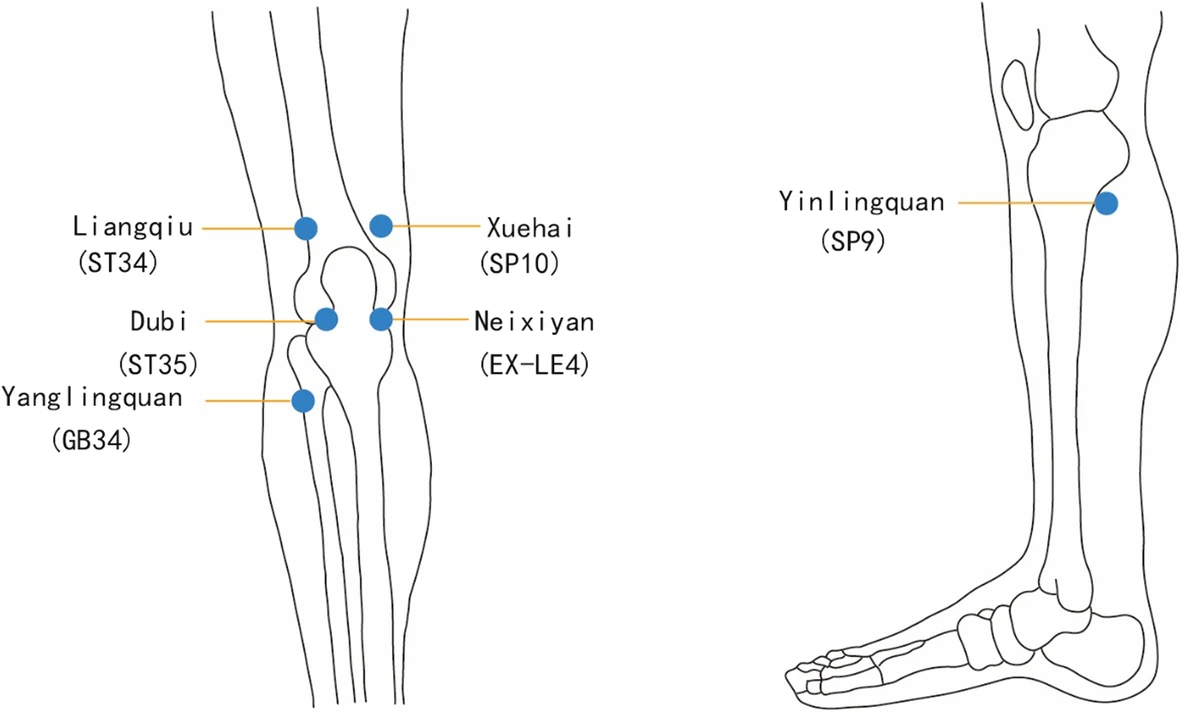
Acupressure points for knee pain – Front
(4) Spleen 10 – SP 10 (Xuehai)
Known as the “Sea of Blood,” SP 10 is located on the inner thigh, about two finger widths above the knee when the knee is flexed, near the inner border of the patella. This point is traditionally used to invigorate blood and help with skin conditions, but it can also be beneficial for addressing pain and inflammation, which can be helpful for knee pain, especially when it’s related to menstrual issues or muscle strain in the thigh.
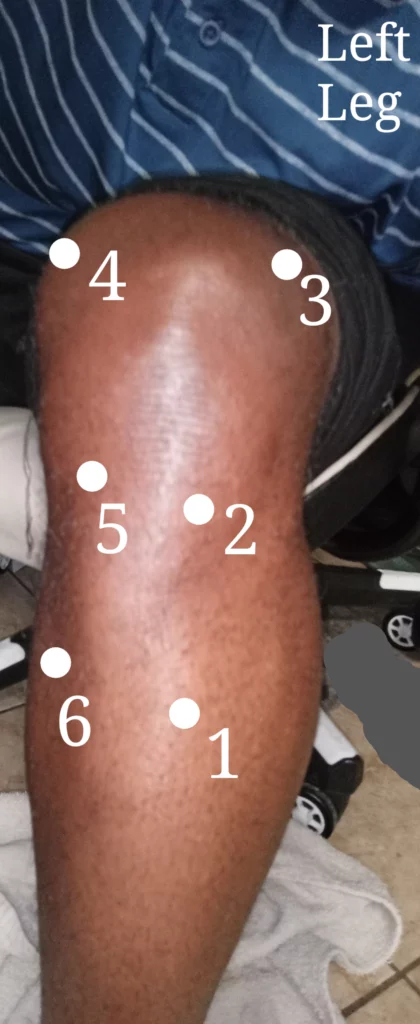
(1) Stomach – ST36 (Zusanli)
Located about four finger widths below the kneecap and one finger width outside the shinbone. Stomach 36 is a well known point for strengthening the whole body, including the knees.
(2) Stomach ST35 (Dubi)
Found when the knee is flexed, in the lateral (outside) depression of the eye of the knees It’s directly related to knee issues, especially pain and swelling. (Cautions include for practitioners to ensure area is sterilized well.
(3) Stomach 34 – ST 34 (Liangqiu)
Located on the front of the thigh, ST 34 is found approximately a hand’s breadth above the kneecap when the knee is flexed, on the line connecting the lateral border of the patella and the anterior superior iliac spine. It’s the xi-cleft point of the stomach meridian, which is used to address acute conditions. ST34 is particularly indicated for knee pain when the pain is on the anterior or lateral aspect of the knee. It’s also used for digestive issues, which can be related to the muscle tension around the stomach meridian.

(5) Xiyan (Extra Point)
Located on on the inner depression of the eye of the knee, when the knee is flexed (bent like sitting down).
(6) Spleen 9 – SP 9 (Yinlingquan)
Spleen 9 is found on the inside of the leg, just below the knee in the depression just below the bone. It’s used for knee pain associated with swelling or fluid accumulation.
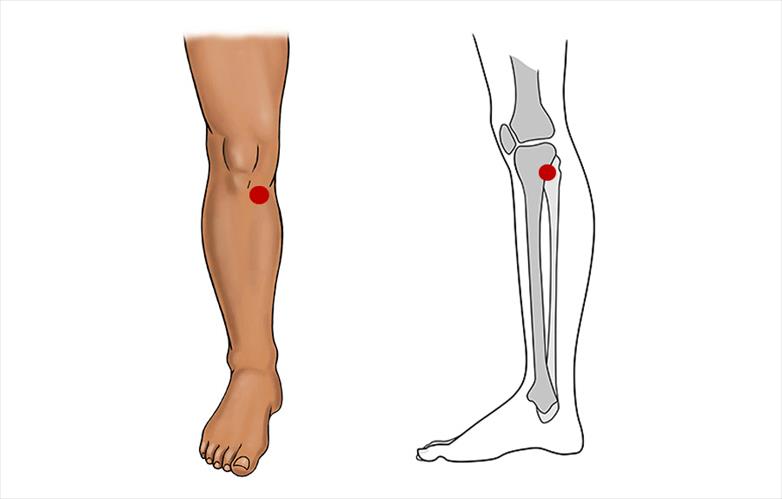
Acupressure Points For Knee Pain – Back
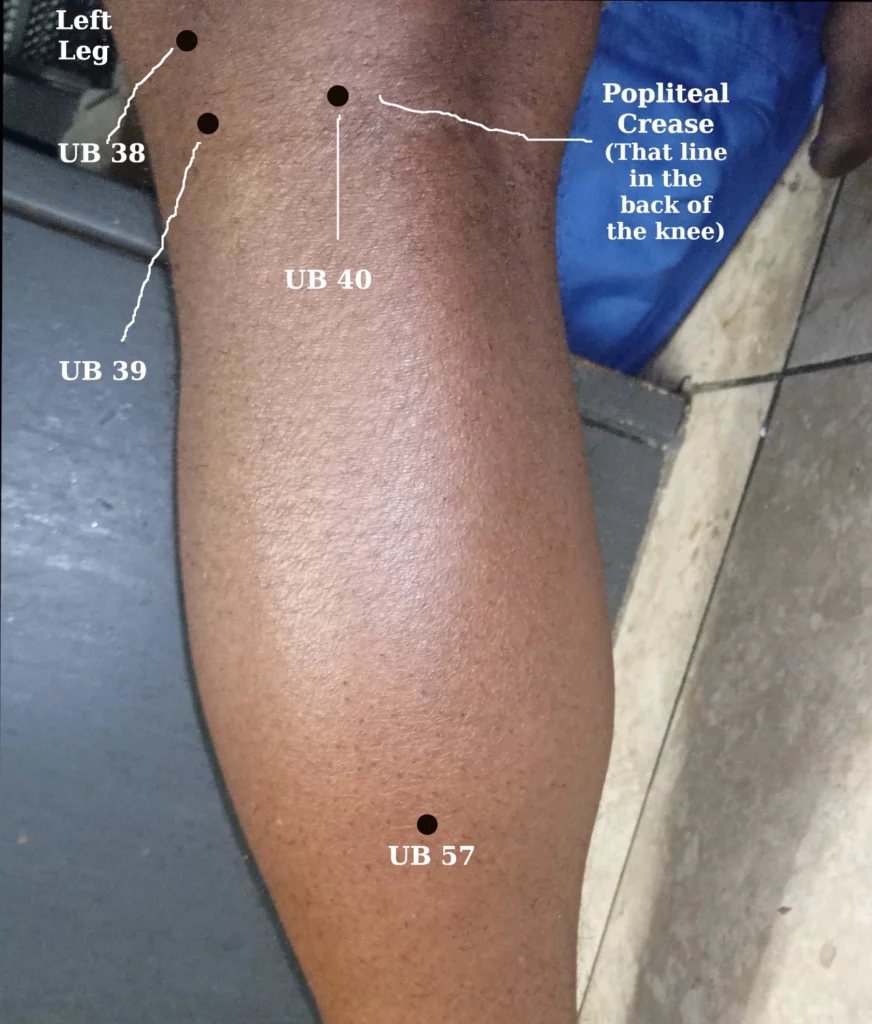
(7) Urinary Bladder 38 – UB38 – (Fu xi)
This point is not classically defined in most acupuncture texts. It may be a point that is used by some practitioners for specific, possibly non-standard treatments. The naming suggests it might be an extra point rather than a traditional one, and its location and use could vary. It’s not commonly referenced in standard acupuncture literature.
(8) Urinary Bladder 39 (UB39) – Weiyang
This point is located at the lateral end of the popliteal crease, on the same level as UB40 but towards the lateral aspect of the leg. It’s known as the “Lower He-Sea point of the San Jiao,” which means it’s traditionally used to treat issues related to the San Jiao (Triple Burner) meridian, which in Chinese medicine is involved with the movement and transformation of fluids in the body.
(9) Urinary Bladder 40 (UB40) – Weizhong
This is one of the most commonly used points in acupuncture. It’s located at the midpoint of the popliteal crease when the knee is flexed. UB40 is considered a powerful point for treating any kind of back pain, including lower back pain. It’s also used for conditions affecting the lower limbs, as well as for cooling the blood and clearing heat from the body, which can be beneficial for skin issues and detoxification.
(10) GallBladder – GB34 (Yanglingquan, Not pictured)
GB34 is located on the lateral aspect of the lower leg, specifically in the depression anterior and inferior to the head of the fibula1.
(11) Urinary Bladder 57 – UB57 (ChengShan)
Is known as “Chengshan,” which translates to “Support the Mountain.” This acupuncture point is located in the calf region and is found by measuring approximately halfway between the popliteal crease (the crease behind the knee) and the heel, in the center of the calf muscle (gastrocnemius).
(12) Large Intestine – LI 11 (Qu Chi)
I couldn’t conclude this article without referring to at least one distal point, and that is LI 11. It is a point on the lateral, or outside part of the elbow, which is used for many different ailments. I use this point in conjunction with other points mention to provide a comprehensive treatment. It’s not used all the time, and not on everyone that is where being a practitioner and a provider come into play. However, it has to be on the list, and once again, one of many possible beneficial points.
Video for Locations of Knee Acupoints
I’ve included a video (using myself as the medical model, since I’m by myself while writing this!) which shows some of the points as well as how to apply acupressure to a point. Acupressure should be done for a short time, 5 – 8 seconds each point.
Acupressure Points Around The Knee
Precautions
As always, you should consult with a licensed acupuncturist for guidance and treatment.
Refrain from exerting pressure on areas that are wounded or show signs of swelling or inflammation (characterized by redness or a warm sensation upon touch).
Steer clear of regions that have scar tissue, as well as spots with boils, blisters, rashes, or varicose veins.
Links To External Resources
Acupressure for Knee Pain (Kaiser)
Self-Acupressure for Older Adults With Symptomatic Knee Osteoarthritis: A Randomized Controlled Trial (Pubmed)
Medical Disclaimer: This article is for informational and educational purposes only and is not a substitute for professional medical advice, diagnosis, or treatment. Always consult a qualified healthcare provider with any questions about a medical condition or treatment.

